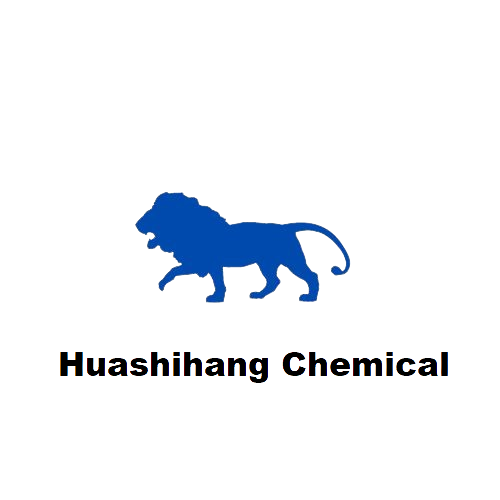Levulinic Acid CAS 123-76-2 is used for resins, pharmaceuticals, fragrances, solvents, coatings and inks, rubber and plastic additives, lubricant additives, surfactants. Also used for hair care products, skin cosmetics. Levulinic Acid, Glyoxylic acid 50%, PVP K30 K90 are widely used for cosmetics. If you are interested in our products, please contact us : info@sdhshchem.com
Reaction principle
Furfuryl Alcohol (conversion rate of about 85.7%)reaction with water (in excess)undergoes a hydrolysis under the action of catalyst HCl to produce levulinic acid (with a product yield of about 84%).
The side reaction is the condensation reaction of furfural alcohol (with a conversion rate of about 14%). Under acidic conditions to form a furfural polymer, while the condensation reaction of furfural under acidic conditions to form a furfural polymer.
The production process of levulinic acid mainly includes hydrolysis, concentration, primary distillation, secondary distillation, crystallization, centrifugation, chemical feed and other stages.
(1) Hydrolysis
The prepared hydrochloric acid solution (concentrated and evaporated acid water mixed with hydrochloric acid) is pumped into the hydrolysis kettle through a metering pump, and then the mother liquor from the mother liquor temporary storage tank is added. The mother liquor is kept at normal pressure and heated to 90 ℃. Furfuryl alcohol is added dropwise through the furfuryl alcohol metering tank, and the dropwise process is about 8 hours. After the dripping is completed, keep it warm for about 9 hours and transfer it to the reaction liquid storage tank.
Hydrolyzed waste gas G1-1 is absorbed by a three-level falling film and sent to a tail gas treatment facility (two-stage alkali absorption+activated carbon adsorption) before being discharged through a 21m exhaust funnel DA001.
(2) Concentration
The materials from the hydrolysis reaction liquid storage tank are transferred to the concentration kettle by a pump, and the temperature is raised to maintain a temperature of 110 ℃ and a pressure of -0.09MPa inside the kettle. The concentration is carried out for 8 hours. The evaporated materials are condensed by the first stage circulating water and then transferred to the acid water tank for recycling to the hydrolysis kettle. The remaining materials are transferred to the distillation kettle.
The concentrated waste gas G1-2 is absorbed by the third stage falling film and sent to the tail gas treatment facility (second stage alkali absorption+activated carbon adsorption) before being discharged through a 21m exhaust funnel DA001.
(3) One distillation
The concentrated liquid is transferred to the distillation kettle, and the heat transfer oil is turned on to heat up. The tower top temperature is maintained at 135 ℃ and the pressure is -0.09MPa, and the distillation lasts for about 24 hours. After being condensed by the first stage circulating water, the dark materials evaporated from the front and rear stages are transferred to the mother liquor tank for reuse in the hydrolysis process. The lighter colored fractions evaporated from the middle stage are subjected to secondary distillation when used to produce isobutyl levulinate according to downstream product needs; When used in the production of water-soluble potassium fertilizer, a single distillation of the shallow product directly enters the crystallization kettle. Distillation residue S1-1 is disposed of as hazardous waste. The exhaust gas G1-3 from a single distillation is discharged through a 21m exhaust funnel DA001 after passing through a tail gas treatment facility (two-stage alkali absorption+activated carbon adsorption).
(4) Secondary distillation (used to produce 99% levulinic acid)
The shallow material distilled from a single distillation is transferred to the distillation kettle, and the above distillation steps are repeated. The heat transfer oil is heated and maintained at a top temperature of 135 ℃ and a pressure of -0.09MPa, and the distillation lasts for about 19 hours. After being condensed by the first stage circulating water, the dark material distilled from the front and rear stages is transferred to the mother liquor tank for reuse in the hydrolysis process. The lighter colored fraction distilled from the middle stage is transferred to the next refining process through the shallow distillation tank, and the distillation residue S1-2 is disposed of as hazardous waste.
The exhaust gas G1-4 from secondary distillation is discharged through a 21m exhaust funnel DA001 after passing through a tail gas treatment facility (two-stage alkali absorption+activated carbon adsorption).
(5) Crystallization, centrifugation
The distilled shallow product enters the crystallization kettle, is stirred, and the ice salt water is slowly cooled to 15 ℃. The crystallization time is about 12 hours. After crystallization, it is transferred to a closed centrifuge for centrifugation. The crystals obtained from centrifugation are manually transferred to the chemical kettle. Reuse the centrifugal mother liquor to the hydrolysis kettle. Crystallization waste gas G1-5 and centrifugal waste gas G1-6 are discharged through a 21m exhaust funnel DA001 after tail gas treatment measures (two-stage alkali absorption+activated carbon adsorption).


